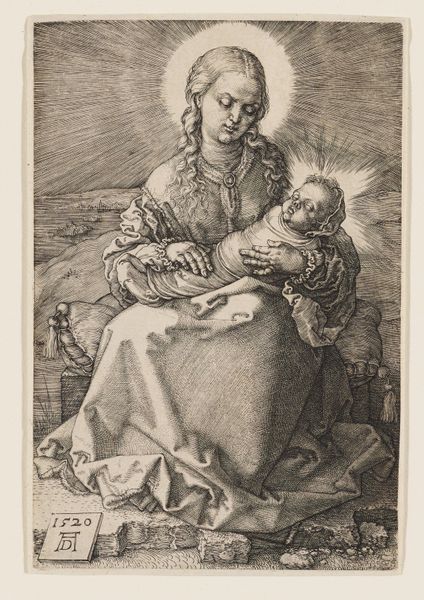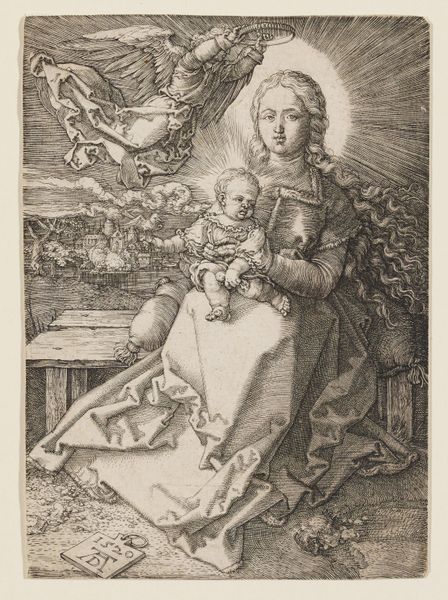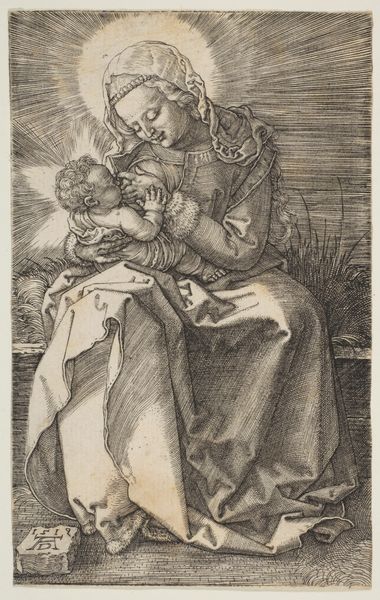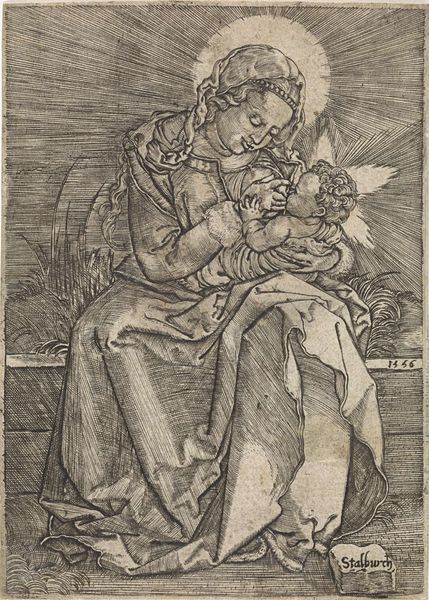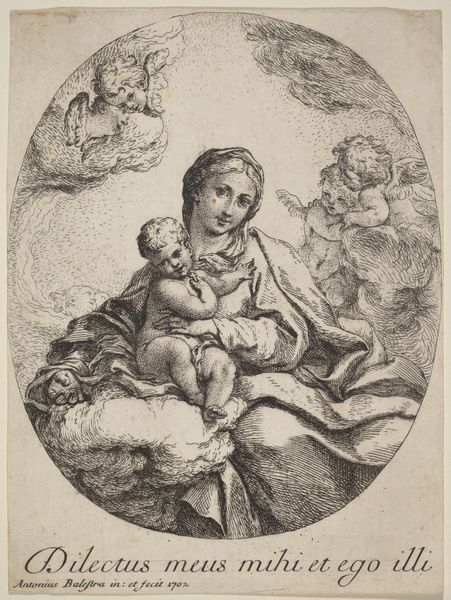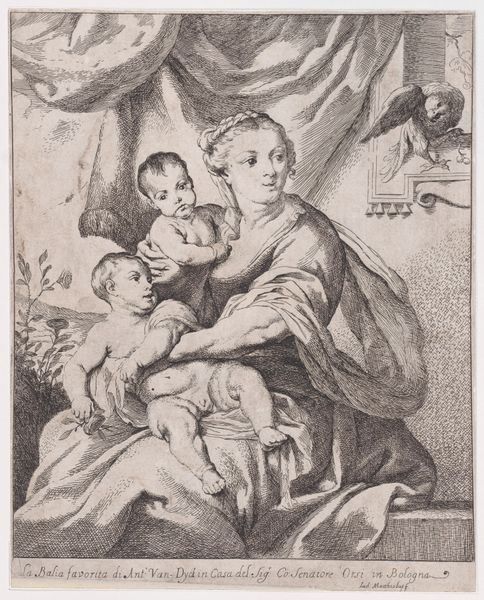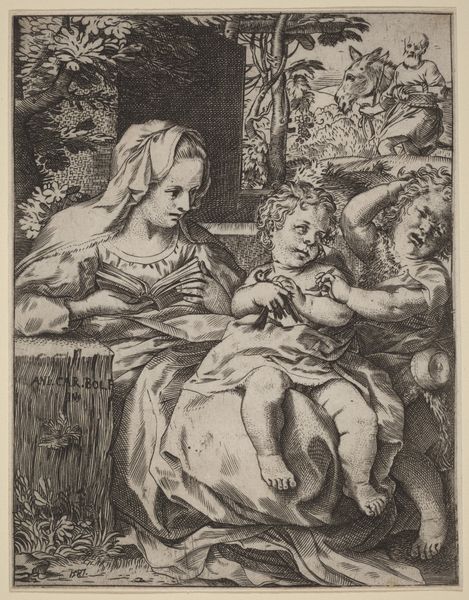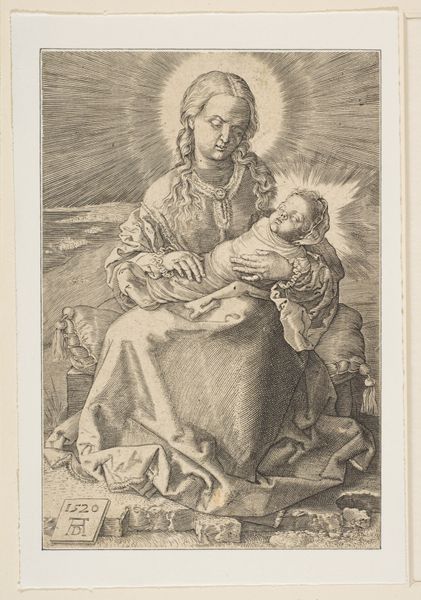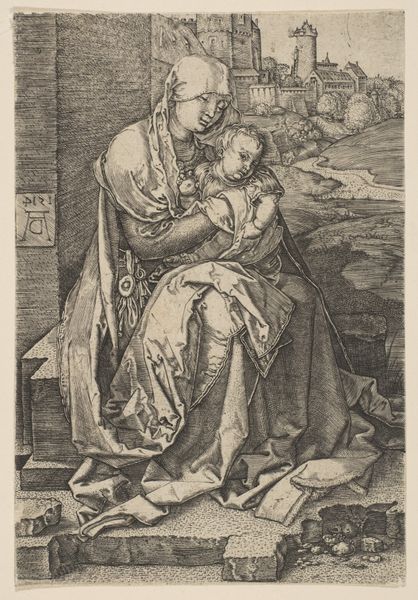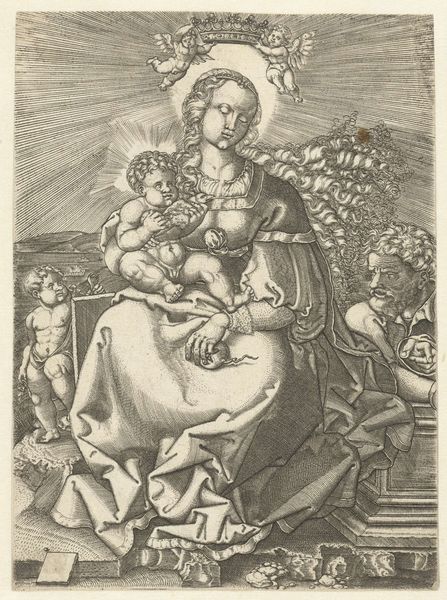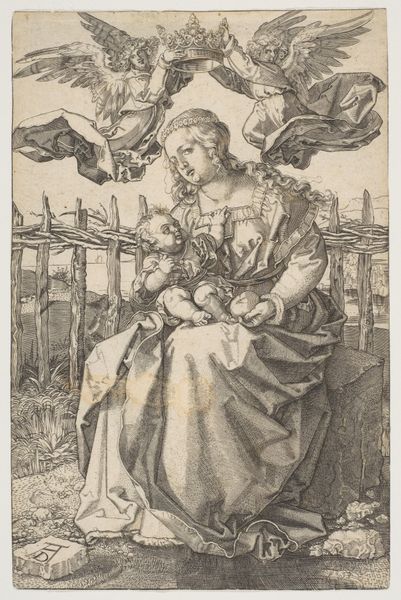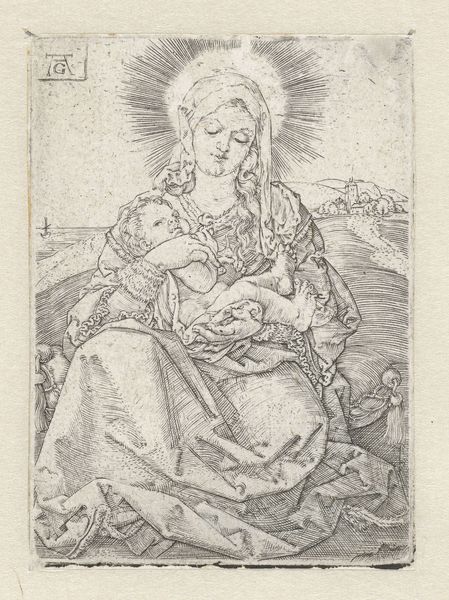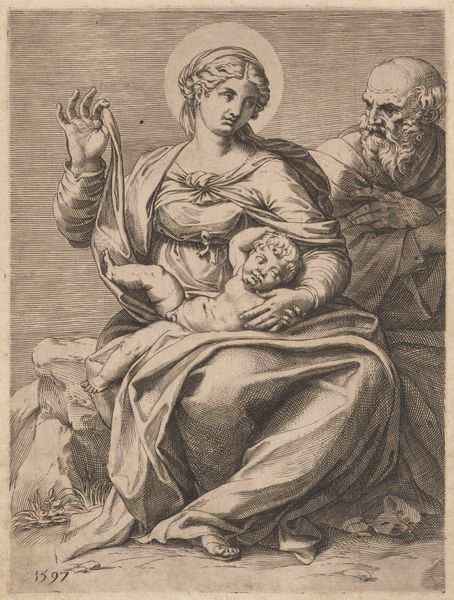
drawing, print, engraving
#
portrait
#
drawing
# print
#
figuration
#
11_renaissance
#
madonna
#
child
#
pencil drawing
#
history-painting
#
northern-renaissance
#
engraving
Dimensions: Sheet: 5 1/2 × 3 3/4 in. (14 × 9.6 cm)
Copyright: Public Domain
Curator: Here we have Albrecht Dürer's "The Virgin with the Swaddled Child," created in 1520. It’s currently housed here at the Metropolitan Museum of Art. Editor: It’s funny; the first thing that strikes me is its weight. Not literal weight, of course, being a print, but visually. It’s dense, serious. The cross-hatching really contributes to that solemn mood, wouldn't you say? Curator: Absolutely. Dürer's masterful engraving technique creates a depth and texture that's quite striking. Consider the halos around their heads; they almost seem to emanate rays, like divine energy, reflecting holiness. It pulls from that longstanding tradition in religious imagery, making them easily recognizable and adding an ethereal glow to the figures. Editor: Yeah, it is traditional. But something about the Virgin’s gaze seems different. Rather than the usual upward beatific look, she’s looking *down* at the baby, like any tired but content mother anywhere, and that humanizes the whole scene somehow, pulling away a little from icon status. And the little baby is sleeping, as all babies do. It's so simple, isn’t it? The scene has this sense of tenderness despite the rigorous technique and rather heavy presentation. Curator: Precisely. And you see how Dürer placed his monogram just under the image? It is like an affirmation. The figure of the virgin appears in some ways that align with Marian devotion that saw full flower during the Middle Ages but he made it his own in a way that resonates until today. Editor: Ah, he made his mark quite literally! Well, for all its visual heaviness and, as you mentioned, its traditional symbolic roots, there’s something universally touching about this Madonna and Child. Dürer makes you really *feel* that connection. Curator: Indeed, a perfect encapsulation of the sacred within the everyday. It continues to affect modern audiences. Editor: Absolutely. Art transcends its historical moment when the symbolism retains that strength of feeling over generations. It’s one of the mysterious powers of visual work.
Comments
No comments
Be the first to comment and join the conversation on the ultimate creative platform.
